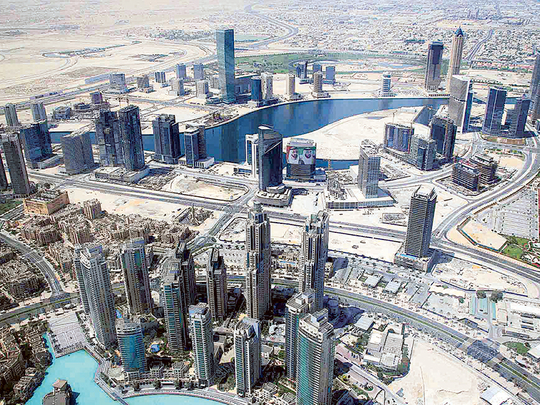
Dubai: Unlike with residential, where there have been bouts of volatility in recent months, Dubai’s office realty seems to be having a better time of it helped by stability in demand as well as steady supply of new stock coming in. At a broader level, it also means that leasing trends for offices have not been impacted by concerns that the Dubai/UAE economy could be in for a rougher ride from weak oil prices.
The overall office stock in Dubai at the end of the first quarter is estimated at 8.1 million square metres, including the 40,000 square metres at Dubai Design District that got delivered during this period, according to estimates by CBRE. Through the whole of last year, the new deliveries were around 420,000 square metres.
Demand for offices premises is running at a high among small and mid-sized businesses, while Dubai’s free zones have also been recording consistent demand as and when new space becomes available.
“There wasn’t a major correction in Dubai’s office property market … all through the last two or three quarters it’s been recording steady movements rather than sharp ups or downs,” said Samir Munshi, Managing Director of Silver Heights, a real estate investment and brokerage firm. “For instance, at the two office towers (Oxford and Empire Heights) in Business Bay, occupancy has gone beyond the 50 per cent mark in the last 12 months.
“The demand we are seeing are for spaces of 1,200-1,500 square feet and not for entire floor spaces. The rental rates are for Dh80-Dh100 a square foot.”
On a year-on-year basis, rental increases for offices in Dubai were in the range of 3 per cent, according to the CBRE report. But the consultancy does sound a cautionary note on short-term forecasts, stating that negotiations between landlords and tenants could take longer than is the norm. The latter might be in a better position to drive hard bargains or win over key commitments/incentives from landlords. Moreover, there is also the possibility that the head offices in Europe and the US — if economic circumstances were to turn tepid — might take longer to clear the relocations of their regional subsidiaries.
A lot will also depend on the internal dynamics of Dubai’s office property market, which “differ greatly depending on whether tenants are required to trade within one of the specialist zones like DIFC or Tecom or trade onshore,” said Simon Townsend, Head of Capital Markets at DTZ. “In these zones the supply of office space is tight, especially in the core DIFC around the Gate, Gate precinct and Gate village where space is considered at a premium.
“Then you have the onshore traditional zones, which in themselves have differing dynamics … prime Shaikh Zayed Road close to DIFC and Emirates Towers retains a limited supply and again tenants do not have the same bargaining power as say in some of the emerging Shaikh Zayed Road locations around Barsha. In Barsha, we are seeing increasing rent-free and, in some instances, fit-out contributions being offered by landlords.”
It is interesting that the bulk of new off-plan launches since the Dubai property market staged a comeback in 2012 were for residential. Most developers are still hesitant to take on new office projects — unless there is a mixed-use element to it via a hotel or serviced apartment. This stems from concerns that way too many office projects — launched in the second half of the last decade — are heading towards completion in various clusters around the city.
The onus of new stock creation could thus vest with government entities in locations such as Dubai World Central, Silicon Oasis and the free zones.












